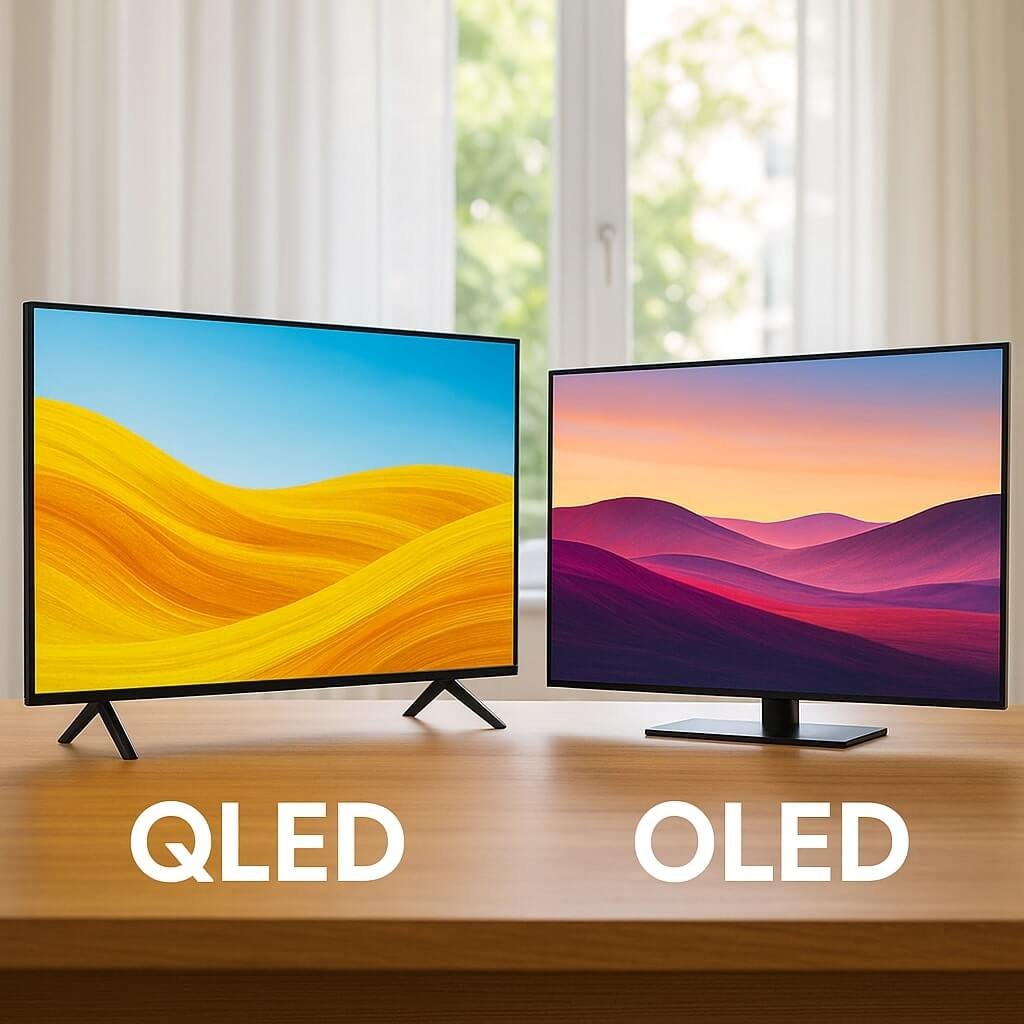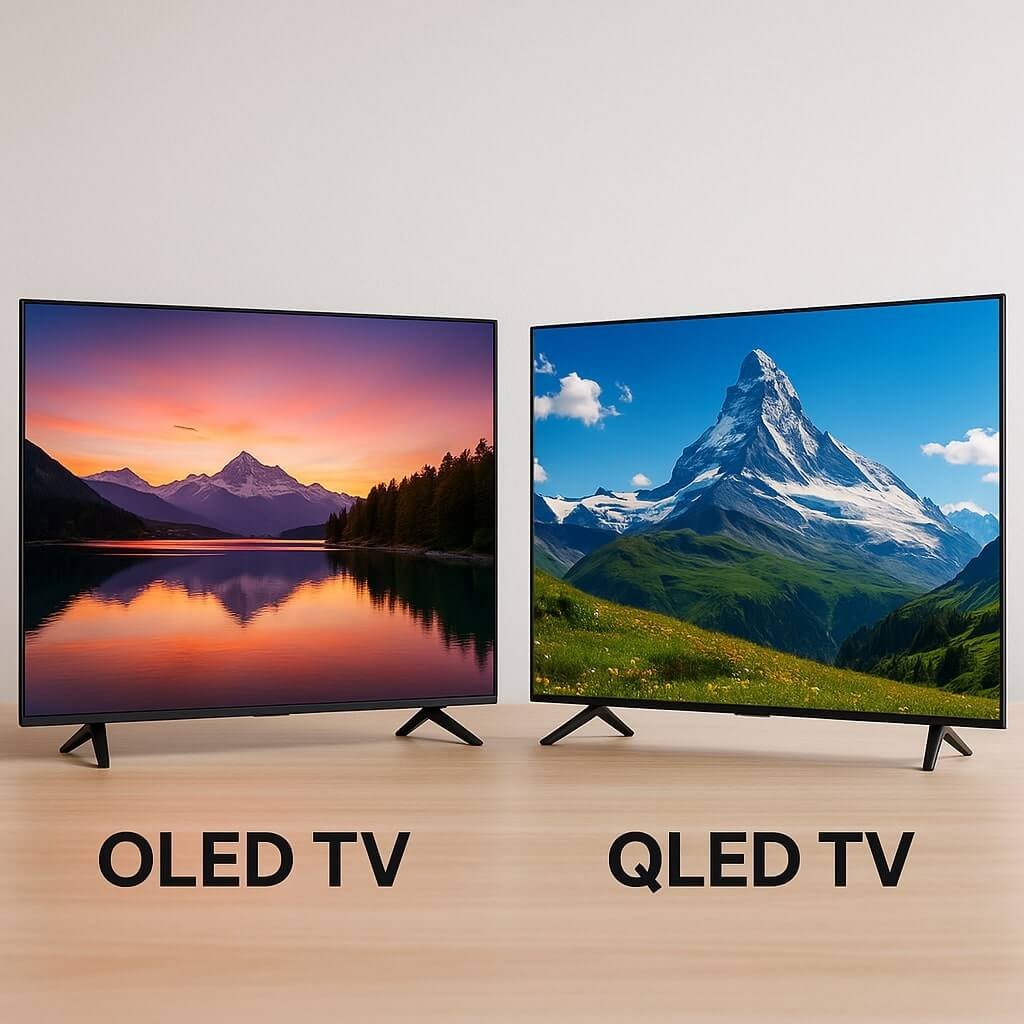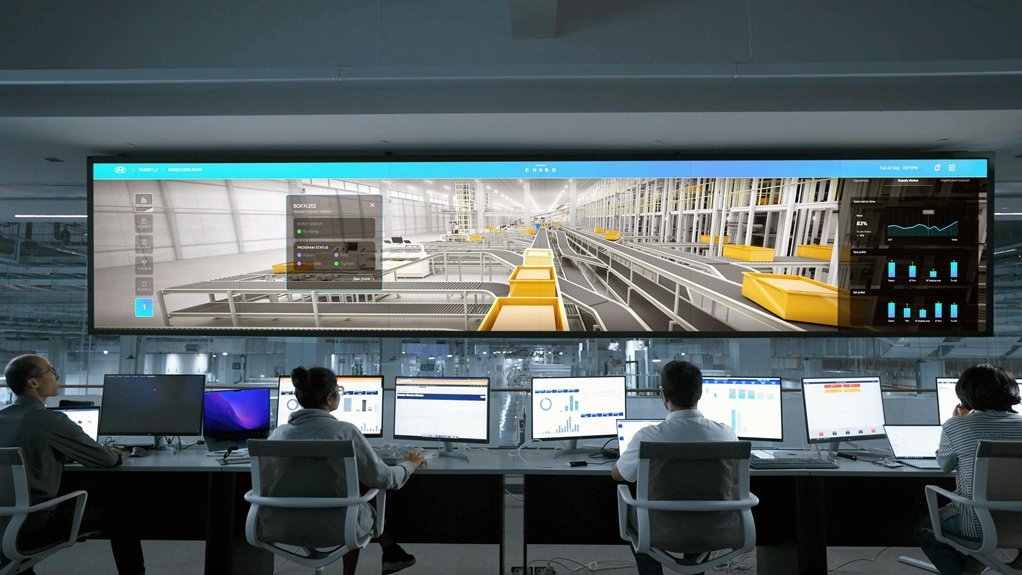When shopping for a new TV, one of the most debated choices is between QLED and OLED technologies. This choice becomes even more crucial if you plan to place your TV in a room flooded with natural light. Understanding how these technologies perform under bright conditions can save you from frustration and ensure optimal viewing pleasure. In this article, we will uncover the truth about QLED vs OLED in bright spaces, helping you make an informed decision based on real-world performance and technical distinctions.
QLED vs OLED: A Brief Overview
What is QLED?
QLED (Quantum Light-Emitting Diode) is a display technology developed and popularised by Samsung. It uses a traditional LED backlight that passes through a quantum dot layer to enhance colour vibrancy and brightness. The image is produced by illuminating an LCD panel.
What is OLED?
OLED (Organic Light-Emitting Diode) is a completely different technology in which each pixel emits its light. This self-emissive characteristic allows OLEDs to achieve perfect blacks and incredible contrast because individual pixels can completely turn off.
Bright Room Performance: Where QLED Shines
Brightness
QLED displays typically offer higher peak brightness levels than OLEDs. This makes QLED TVs particularly advantageous in sunlit rooms or spaces with many windows, as they can combat ambient light more effectively.
- Typical peak brightness (QLED): Up to 2000 nits
- Typical peak brightness (OLED): Up to 1000 nits
Anti-Reflective Coatings
Many QLED TVs come equipped with advanced anti-reflective layers, reducing glare and reflections. OLEDs are improving in this regard, but QLEDs still lead in minimising distractions in well-lit environments.
Color Volume
Thanks to the quantum dots, QLED TVs excel in delivering vibrant colours even at high brightness levels, maintaining colour accuracy and saturation better than OLEDs in bright conditions.
OLED in Bright Spaces: Strengths and Weaknesses
Contrast and Black Levels
OLED displays offer infinite contrast ratios thanks to their ability to turn off individual pixels. This gives them a visual depth and realism that is unmatched, particularly noticeable in dark scenes.
However, in bright rooms, this contrast advantage may be diminished if ambient light washes out those deep blacks.
Viewing Angles
OLED panels maintain superior viewing angles compared to QLEDs. The colours and brightness remain consistent even if you are not sitting directly in front of the screen—ideal for large rooms where people sit at different angles.
ABL (Automatic Brightness Limiter)
To prevent burn-in and extend lifespan, OLED TVs use an ABL mechanism that reduces screen brightness during sustained bright scenes. This can be noticeable in bright environments and may make the picture appear dimmer than desired.
Durability and Longevity in Bright Rooms
OLED Burn-In Risk
OLED displays carry a risk of image retention or burn-in, especially when displaying static content like logos or news tickers for prolonged periods. While modern OLEDs have features to minimise this risk, it’s something to consider in commercial or very bright, high-use environments.
QLED Robustness
QLED panels are not susceptible to burn-in, making them a safer choice for sports bars, conference rooms, or gaming sessions in bright conditions.
Energy Efficiency
OLEDs can be more energy-efficient when displaying dark content because the pixels are off. However, in bright scenes, they may consume more power due to the increased pixel brightness. QLEDs, while consistent in power usage, tend to draw more power overall due to their constant backlight operation.
Final Verdict: Which is Better for Bright Rooms?
| Feature | QLED | OLED |
|---|---|---|
| Peak Brightness | Higher | Moderate |
| Glare Handling | Superior | Good |
| Contrast & Blacks | Good | Exceptional |
| Viewing Angles | Good | Excellent |
| Color in Bright Scenes | Vibrant | Accurate but limited by ABL |
| Burn-in Risk | None | Possible |
| Best Use Case | Bright rooms, daytime viewing | Dim rooms, cinematic experience |
Recommended:
- QLED is the better choice for rooms with abundant natural light, large windows, or overhead lighting.
- OLED is ideal for dim to moderately lit rooms where picture contrast and colour fidelity are top priorities.
Frequently Asked Questions (FAQs)
Is QLED or OLED better for a sunny living room?
QLED is generally better for sunny living rooms because it offers higher brightness and superior glare resistance.
Will OLED TVs look washed out in a bright room?
They can appear dimmer, especially during extended bright scenes, due to ABL limitations. However, OLED TVs still offer good performance with some effort to control ambient lighting.
Can OLED TVs get as bright as QLEDs?
Not typically. OLED TVs max out at lower brightness levels, usually between 700–1000 nits, while QLEDs can go well beyond that, making them more suitable for brightly lit spaces.
Is burn-in a real issue with OLED in bright environments?
Yes, especially if you watch content with static elements at high brightness for long periods. QLED does not suffer from burn-in at all.
Which type lasts longer in bright environments?
QLED is more durable under high brightness usage, while OLED may degrade faster if exposed to long hours of bright, static content.
Conclusion
Choosing between QLED and OLED ultimately depends on your room’s lighting conditions and viewing habits. For bright spaces where glare and light interference are issues, QLED delivers a more practical and long-lasting viewing experience. For those who value cinema-grade blacks and immersive quality in controlled lighting, OLED remains an exceptional choice.






